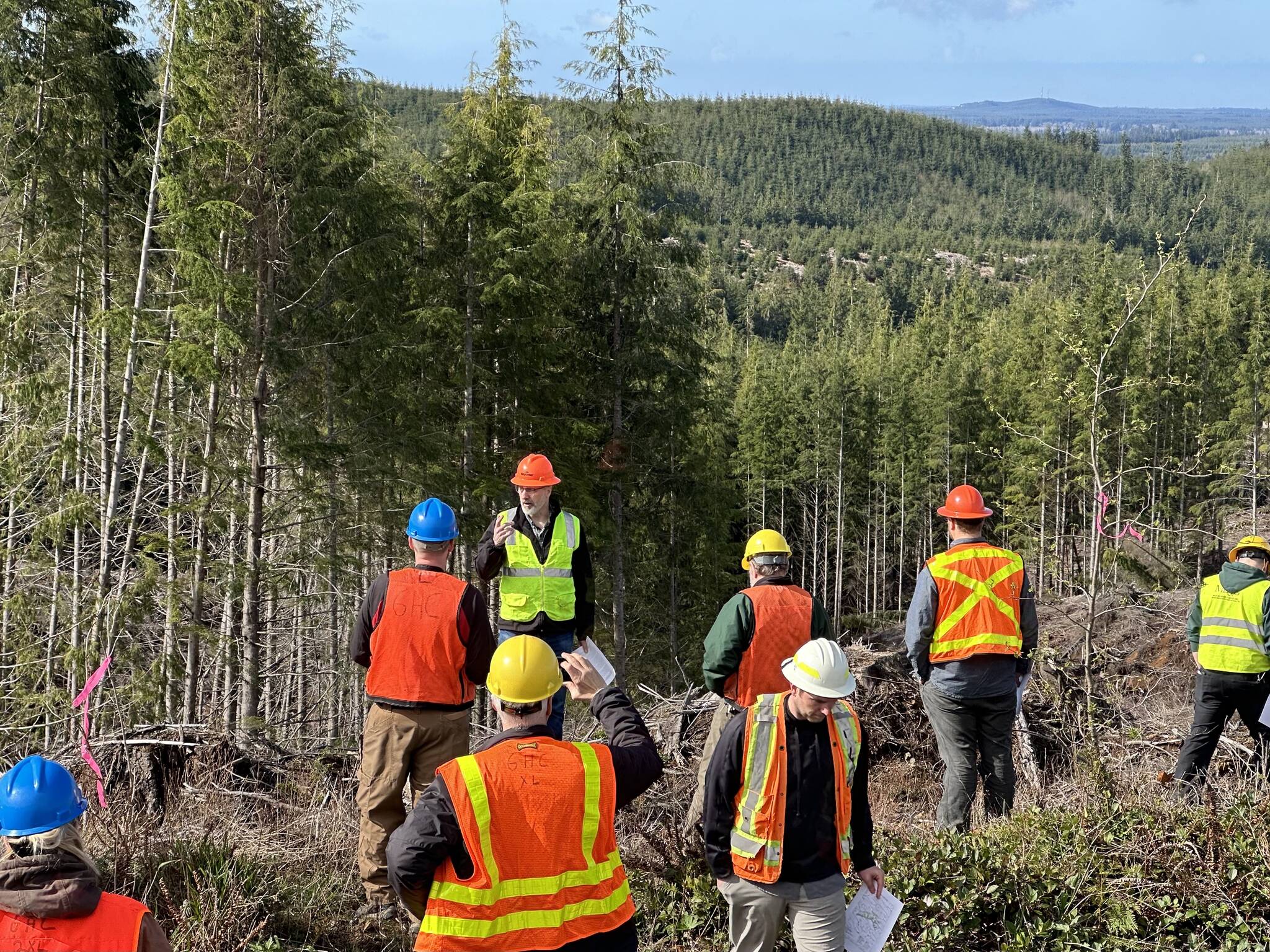In 1974, working in the woods changed forever. Those who make that their livelihood, and others with a stake in Washington’s forests, are looking back at the successes and failures of 50 years of environmental protection and what lies ahead for the next five decades.
Washington’s Forest Practices Act laid the foundation for rules around logging, like road building, stream buffers, road building and spraying of chemicals. But the important act has implications for the entire state, not just loggers, said Marissa Bass, a local manager for a national forest management consulting firm and former chair of the professional organization representing the timber industry.
“The forest products industry has a really rich history in the Pacific Northwest,” Bass said. “I think it’s important to always highlight that and be proud of it. We’ve come a long way with our current forest practices, and as they continue to evolve, it’s important to honor the past, and continue to try to do better.”
Grays Harbor College hosted the annual meeting of the Washington State Society of American Foresters April 3-5. Attended by about 130 people including state forest and wildlife managers, representatives from private timber companies and tribal natural resource managers, the meeting orbited around the anniversary of the important forest law.
Todd Bates, who leads the associate’s forestry program at Grays Harbor College, said he thought the topic drew increased interest from the society’s members because of the relevance of forest practice rules, which have “majorly impacted and benefited the environment by how we treat our forests and still obtain commodities and services.”
“It’s been an evolution over the last 50 years,” he said.
Washington’s earliest forestry laws date back to 1946, when the state first started requiring the industry to replant harvested trees. That was replaced with the Forest Practices Act in the 70’s when many influential environmental laws came into effect at the federal level.
Under the new law, the state’s Forest Practices Board drafted and adopted its policies and procedures, along with rules around road construction, harvesting and chemical spraying. But the long process of updating and refining those rules was just beginning.
Five years after the act was passed, a superior court judge found that the rules did not provide for adequate review under the State Environmental Policy Act. More than a dozen committees were formed and tasked with studying a myriad of issues.
Those progressed over the next couple of years, but one issue in particular — riparian areas, the vegetative buffer around streams — continually tripped up rule makers. That led to one of the most notable collaborative efforts in the five decades of the Forest Practices Act.
Over the course of six months in 1986, representatives from the state’s largest timber companies, industry groups, state agencies, environmental groups and tribes took on “difficult” and “emotionally draining” meetings to negotiate a compromise between their interests. A federal court ruling from 13 years prior had upheld tribal treaty rights to half of the harvestable fish in Washington rivers, while the state had a duty to provide a viable wood products industry.
The result was the 1987 Timber, Fish and Wildlife Agreement, which set up a new process for reviewing forest practice rules.
When the agreement was published, it stated, “The participants agreed that the state of Washington needs a viable timber industry and it needs to protect and enhance its fish, wildlife, water and cultural archaeological resources. Further, they agreed that these needs are not mutually exclusive. They are compatible.”
The collaborative approach to solving natural resource conflicts when it comes to logging practices continues today. But it’s not without ups and downs. Court Stanley, who has spent nearly 40 years in the wood products industry, likened the collaborative relationship to a marriage.
“It’s gone really well at times,” Stanley said at the conference in Aberdeen last week. “I think right now we’re sleeping in separate bedrooms, but we’re still in the house. We need to really work on our relationships, rebuild the trust.”
That’s especially true as the groups work to keep practices aligned with the changing climate and other social pressures.
For tribes, participation in the agreement meant setting aside sovereignty and treaty rights to collaborate with landowners and the state — a big reason it was successful, said Jim Peters, a Squaxin Island tribal member and policy analyst for the Northwest Indian Fisheries Commission.
The environmental stressors on salmon place a similar strain — and challenge for the future — on the collaborative nature of the state’s forest practices agreements.
“When the outcome is where our resources are continuing to be depleted and somebody wants to put more impact on those resources, then it’s really tough for me representing the tribes in those discussions for me to compromise anymore, because a compromise will mean my fishermen have less days fishing,” Peters said.
Forest leaders at the Grays Harbor College meeting emphasized the importance of ushering in the next generation of managers to carry out the agreements.
“We are running out of time in some of these systems,” Peters said. “But I still am very optimistic.”
Contact reporter Clayton Franke at 406-552-3917 or clayton.franke@thedailyworld.com.


